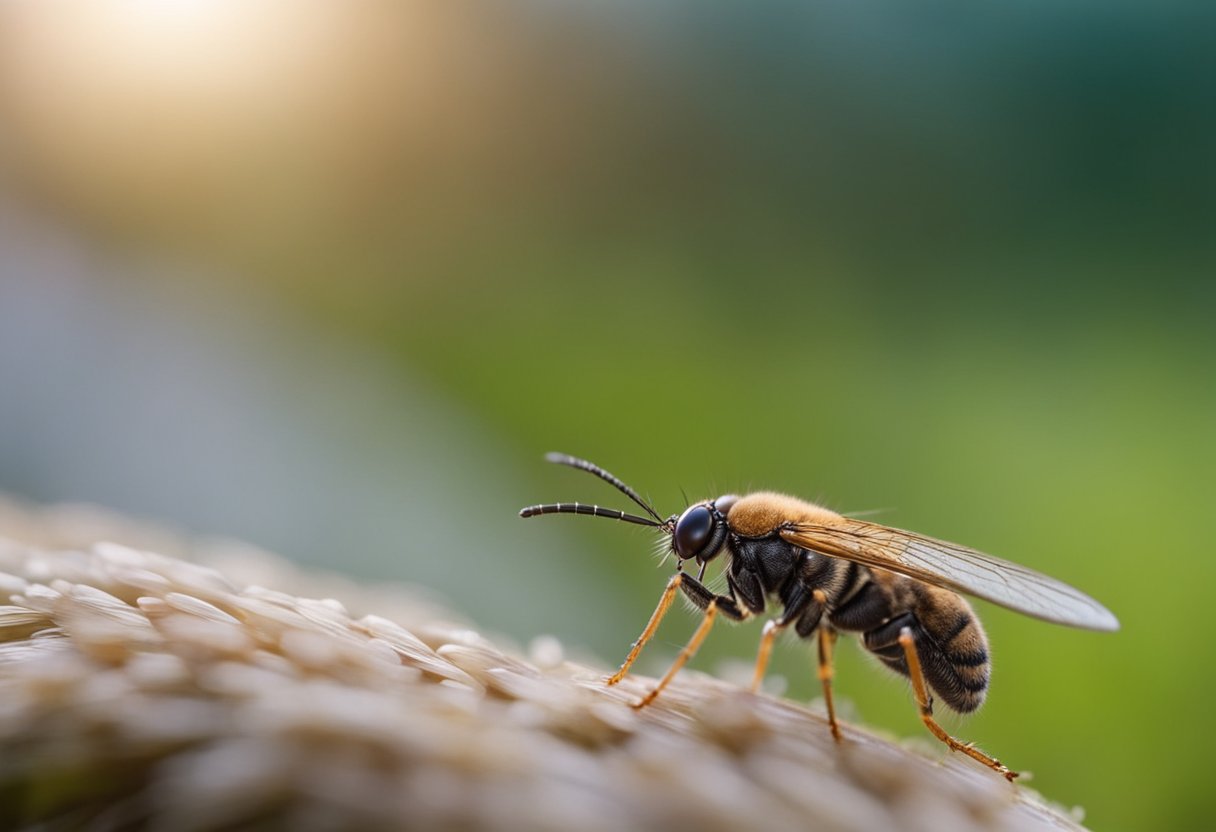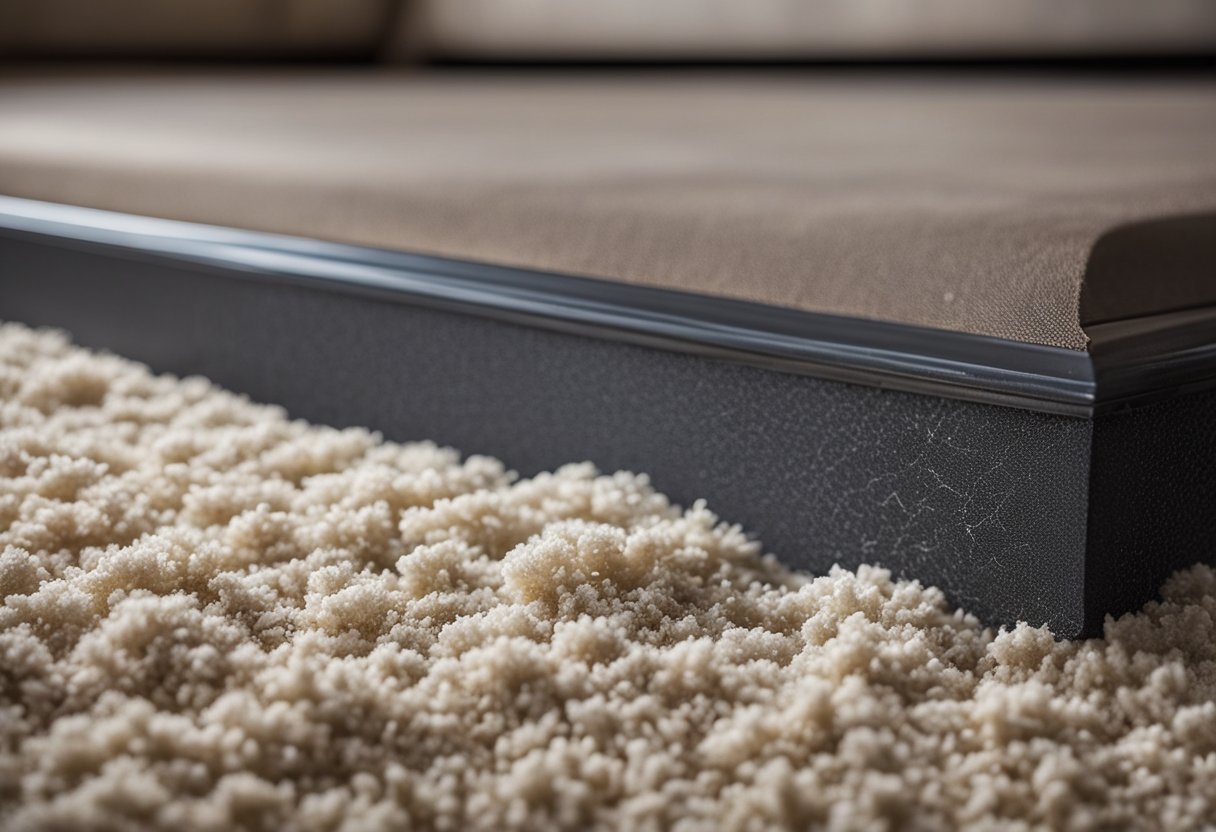Identifying a flea infestation in your home is crucial to maintaining a comfortable and healthy living environment for you and your pets. Fleas are small, wingless insects that survive by consuming the blood of their hosts. They can jump remarkable distances and are known for their rapid reproduction rates. A single flea can lay up to 50 eggs a day, which means an infestation can quickly escalate if not addressed promptly.

You may not always see fleas hopping around, as they can be quite elusive, but there are telltale signs that indicate their presence. Your pets are often the first indicators, as they will scratch incessantly and may show patches of hair loss or red, irritated skin. In your home, fleas prefer to live in fabrics and can be found in carpets, bedding, or upholstered furniture. Observing small black specks, known as flea dirt, which is actually flea feces, or tiny white specks that are flea eggs, can confirm your suspicions of an infestation.
Recognizing Signs of Flea Infestation
When fleas invade your home, they leave distinct signs on pets and around your living spaces that you can observe. Identifying these signs early is crucial to controlling and eliminating a potential infestation before it worsens.
Scratching and Biting
If you notice your pets scratching or biting their fur more than usual, this may be a reaction to flea bites. Fleas primarily feed on the blood of animals, and their bites can cause irritation and allergic reactions in your pets’ skin. Frequent scratching can lead to hair loss and inflamed skin.
Flea Dirt and Eggs on Pets
Flea dirt appears as small, darkish specks in your pet’s coat, typically found on their skin when you part the fur. This “dirt” is actually flea feces composed of digested blood. Additionally, you may find tiny, white flea eggs nestled in your pet’s fur or on your pet’s bedding which are about the size of a grain of salt.
Sightings of Fleas on Animals and Fabrics
Spotting fleas directly on your pets or household fabrics is a clear indication of an infestation. These pests are small, reddish-brown, and agile, capable of jumping from one location to another. Keep an eye out for fleas particularly on animals and in areas where your pets rest or play.
Inspecting Your Home for Fleas
Areas Prone to Flea Activity
Your inspection should start in areas where pets spend the most time, as fleas often jump onto pets outside and then enter your home on them. Pay special attention to carpets, rugs, and pet bedding. Examine carpets and area rugs systematically, looking for flea dirt (small black specks), live fleas, or their eggs. Fleas prefer fabric surfaces for their warmth and protection, so don’t overlook wood floors adjacent to carpets and upholstered furniture.
Using White Socks for Detection
An effective method to check for fleas is to put on a pair of white socks and walk over the rugs and carpets. The white fabric makes it easier to see fleas, which may be visible as small, dark specks against the light background. Additionally, fleas might jump onto the socks, allowing for visual confirmation of their presence.
Examining Bedding and Upholstered Furniture
Thoroughly inspect all bedding, linens, blankets, and couches. Use hot water to clean any washable items since high temperatures can kill fleas. When inspecting upholstered furniture, focus on seams and folds where fleas and their eggs can hide. A flashlight may help in detecting the small, dark insects within the crevices of your furniture.
Understanding the Flea Life Cycle
Recognizing the stages of the flea life cycle is crucial for effective control and prevention of an infestation in your home.
Stages of Development
Eggs: Flea eggs are the beginning of the cycle. These tiny, pearl-like specks are laid on infested animals, and since they’re not sticky, they often fall off into your environment—on carpets, bedding, and furniture.
Larvae: The eggs hatch into larvae, which are small, worm-like creatures. These flea larvae avoid light and burrow into carpets, upholstery, or cracks in the flooring. They feed on organic matter like dead skin cells and adult flea feces.
Pupae: After feeding and growing, larvae develop into pupae within silk-like cocoons. These are resilient and can remain dormant for weeks, even months, waiting for the right conditions to emerge as adult fleas.
Adult Fleas: The final stage of the flea life cycle is the adult flea, which is small, wingless, and has a flat body. These adults then find a host, such as your pet, to feed, mate, and start the cycle all over again.
Conditions Favoring Growth
The ideal conditions for fleas to thrive are warm and humid environments.
- Temperature: Fleas require temperatures between 70 and 85 degrees Fahrenheit.
- Humidity: A relative humidity level of 70% is optimal for flea development.
In your yard, fleas are often found in tall grass, shrubs, or overgrown vegetation where infested animals spend time. Weather affects the flea life cycle; warm and humid conditions accelerate their development, while cold halts it. It’s important to regularly check and treat areas where your pet rests, as they can carry the fleas inside your home.
Treating and Controlling Flea Infestations
To successfully treat and control flea infestations, you’ll need to take a multi-pronged approach that includes choosing the right treatments, employing environmental control strategies, and maintaining regular cleaning routines.
Choosing the Right Flea Treatment
Flea Collars: They provide long-term protection by releasing chemicals that repel or kill fleas. Make sure to select one that’s appropriate for the size and age of your pet.
- Topical Medications: These are applied directly to your pet’s skin, usually between the shoulder blades, and are effective at killing fleas and preventing further infestation.
- Oral Medications: Pills given once a month can be an effective way of controlling fleas. They work by disrupting the life cycle of fleas and are administered orally.
Environmental Flea Control Strategies
- Insecticides: Treat your home with sprays or powders that specifically target fleas. It’s essential to follow the manufacturer’s instructions and treat all areas where fleas can live.
- Steam Cleaning: Flea larvae and eggs can be eliminated by steam cleaning your carpets and upholstery, as the high temperatures are lethal to fleas at all stages of their life cycle.
Regular Cleaning and Vacuuming Routines
- Vacuuming: Use a strong, bagless vacuum to remove flea eggs, larvae, pupae, and adults. Focus on carpets, upholstery, and areas where your pet spends a lot of time.
- Washing: Frequently wash your pet’s bedding, blankets, and other washable items in hot, soapy water to kill fleas.
Preventive Measures to Keep Fleas Out

Maintaining a flea-free home involves consistent efforts both indoors and outdoors, focusing on your pets’ grooming and your yard’s condition. Here’s how you can protect your living space by implementing key strategies.
Proper Pet Care and Regular Check-ups
Regular grooming is essential for keeping fleas at bay. Use a flea comb to brush through your pet’s fur, dipping the comb in soapy water to kill any fleas that are caught. Wash your pet’s bedding in hot water at least weekly to eliminate any flea eggs or larvae. Additionally, take your pet to the veterinarian for routine check-ups and discuss appropriate preventatives such as spot-on treatments or oral medications to deter fleas.
Landscaping and Outdoor Area Treatment
In your yard, focus on areas where your pet spends time. Fleas thrive in shady areas, so prune trees and trim bushes to let in more sunlight. Keep your grass cut short and remove debris to minimize flea habitats.
- Sock Test: Walk through your yard with a pair of white, knee-high socks over your shoes. Fleas are attracted to the motion and light color, making them easy to spot if they’re present.
- Water: Introduce beneficial nematodes to moist areas. These microscopic worms are harmless to plants and pets but will destroy flea larvae.
- Outdoor Treatment: Apply insecticide to shaded spots, beneath decks, and along baseboards where fleas might hide. Always read and follow label instructions or consider hiring a professional for application.

